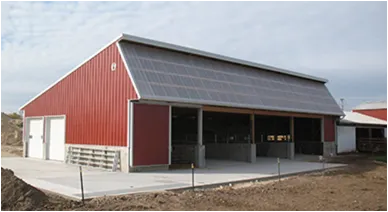- Afrikaans
- Albanian
- Amharic
- Arabic
- Armenian
- Azerbaijani
- Basque
- Belarusian
- Bengali
- Bosnian
- Bulgarian
- Catalan
- Cebuano
- Corsican
- Croatian
- Czech
- Danish
- Dutch
- English
- Esperanto
- Estonian
- Finnish
- French
- Frisian
- Galician
- Georgian
- German
- Greek
- Gujarati
- Haitian Creole
- hausa
- hawaiian
- Hebrew
- Hindi
- Miao
- Hungarian
- Icelandic
- igbo
- Indonesian
- irish
- Italian
- Japanese
- Javanese
- Kannada
- kazakh
- Khmer
- Rwandese
- Korean
- Kurdish
- Kyrgyz
- Lao
- Latin
- Latvian
- Lithuanian
- Luxembourgish
- Macedonian
- Malgashi
- Malay
- Malayalam
- Maltese
- Maori
- Marathi
- Mongolian
- Myanmar
- Nepali
- Norwegian
- Norwegian
- Occitan
- Pashto
- Persian
- Polish
- Portuguese
- Punjabi
- Romanian
- Russian
- Samoan
- Scottish Gaelic
- Serbian
- Sesotho
- Shona
- Sindhi
- Sinhala
- Slovak
- Slovenian
- Somali
- Spanish
- Sundanese
- Swahili
- Swedish
- Tagalog
- Tajik
- Tamil
- Tatar
- Telugu
- Thai
- Turkish
- Turkmen
- Ukrainian
- Urdu
- Uighur
- Uzbek
- Vietnamese
- Welsh
- Bantu
- Yiddish
- Yoruba
- Zulu
নভে. . 14, 2024 12:17 Back to list
Foundation Design for Steel Columns
The foundation design for steel columns is a critical component in the overall structural engineering process, ensuring that buildings and structures are both safe and durable. Steel columns serve as vertical supports, transferring loads from the superstructure to the foundation. Therefore, a properly designed foundation is essential for the stability and integrity of any structure, including residential buildings, commercial facilities, and industrial complexes.
Understanding Loads
To design an effective foundation for steel columns, engineers must first understand the loads that the columns will carry. These loads typically include dead loads (the weight of the structure itself), live loads (the weight of occupants, furniture, and movable equipment), and environmental loads (such as wind, snow, and seismic activity). Load combinations and factors must be considered according to local building codes and standards, ensuring that the foundation can adequately support the imposed loads without risk of failure.
Foundation Types
There are several types of foundations that can be used for supporting steel columns, including shallow foundations, deep foundations, and pile foundations
. The choice of foundation type depends on various factors, including soil properties, load conditions, and the overall design of the structure.1. Shallow Foundations These are generally used when the soil at shallow depths has sufficient load-bearing capacity. Examples include spread footings and mat foundations. Spread footings are often employed to distribute the load from the column over a wider area, while mat foundations are used for larger columns or when the load is particularly heavy.
2. Deep Foundations When surface soils are inadequate to support the loads, deep foundations may be necessary. Piers and caissons are common types of deep foundations. These foundations extend deeper into the ground to reach more stable soil or bedrock. They provide additional resistance against lateral forces and are especially useful in areas prone to shifting soils or seismic activity.
foundation design for steel column

3. Pile Foundations Pile foundations are another option, often used to transfer loads to deeper, more stable soil layers. They can be driven or drilled into the ground, providing excellent load-bearing capacity, particularly in weak or unstable soils. Pile foundations are commonly used in high-rise buildings, bridges, and other structures where load demands are significant.
Soil Investigation
A thorough soil investigation is paramount to foundation design. This investigation typically includes soil sampling and testing to determine the soil's physical and mechanical properties such as shear strength, compressibility, and bearing capacity. Understanding soil behavior under different loading conditions is crucial for selecting the appropriate type of foundation and ensuring its stability.
Design Considerations
In addition to understanding loads and soil conditions, several design considerations must be taken into account. These include
- Settlement Engineers must predict both immediate and long-term settlement of the foundation to avoid differential settlement that can lead to structural damage. - Lateral Stability Foundations must be designed to resist lateral forces, such as wind and earthquakes, which could destabilize the structure. - Durability The materials used in the foundation must be durable and capable of resisting corrosion, especially in environments where moisture levels are high.
Conclusion
In summary, the foundation design for steel columns is a complex process that requires careful consideration of various factors, including load conditions, soil characteristics, and structural requirements. By employing appropriate foundation types and ensuring thorough soil investigation, engineers can design foundations that adequately support steel columns, promoting the safety, stability, and longevity of structures. Well-designed foundations not only enhance the structural integrity but also contribute to the overall efficiency and functionality of the built environment.
-
Cold Formed Steel Residential Framing
NewsMay.21,2025
-
Innovative Steel Structure Building Solutions
NewsMay.19,2025
-
Innovative Prefab Metal Shed Solutions
NewsMay.19,2025
-
Durable Steel Horse Shelter Solutions
NewsMay.19,2025
-
Durable Metal Shed Solutions
NewsMay.19,2025
-
Durable Big Metal Shed Solutions
NewsMay.19,2025
Products categories
Our Latest News
We have a professional design team and an excellent production and construction team.












